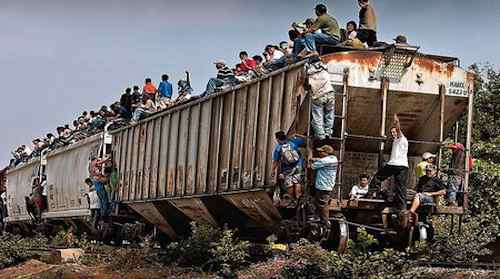El Salvador’s Plan to Defeat Gangs Must Start With Youth

*Gang violence in El Salvador is causing the same family displacement as war. Many of the displaced find their way to the U.S. VL
 By Róger Lindo, New America Media
By Róger Lindo, New America Media
Last year, 70,000 children and adolescents from Guatemala, El Salvador and Honduras fled to the U.S. to escape from the maras.
Media in the Central American country of El Salvador reported recently that dozens of families in the rural community of El Llano abandoned their homes after gang members (locally known as maras) threatened that they were going to “wipe out the community” in retribution for sheltering members of a rival gang.
Two days later, residents of Mejicanos, a working class town north of San Salvador, told police officers and journalists that they had received death threats from gang members. A dozen families decided to leave their dwellings.
These and other cases suggest the existence within El Salvador of a growing number of people who have been displaced by violence, not unlike a situation of war. It’s a sad reality in a country, which, 23 years ago, ended a 10-year conflict that left an estimate of 75 thousand people dead. UN Secretary General Ban Ki-moon, who attended the anniversary ceremonies celebrating the end of that bloodshed, remarked that insecurity is one of the challenges that still remain in El Salvador.
Last year, 70,000 children and adolescents from Guatemala, El Salvador and Honduras fled to the southern border of the United States. According to numerous testimonies, a large portion of them undertook this journey to escape from the maras.
The gangs which have overrun El Salvador originated in Los Angeles, and were exported to this country thanks to an aggressive policy of deportations. Due to chronic poverty, and lack of economic opportunities, gang members found it easy to recruit youngsters in shantytowns and working class communities. The neglect of poor areas by past administrations and the private sector, along with a series of failed policies, allowed gangs to gain control of large swathes of territory.
At this stage, gangs have become so entrenched in poor communities that they include mothers, sons, grandfathers and grandsons. Entire families participate in crimes like extortion and kidnappings.
Due to lack of resources and training, the protection that Salvadoran police can provide its own citizens is limited. In the case of El Llano, all that the National Civil Police (PNC) could do was accompany the displaced back to their homes so they could pick up some of the belongings they had left behind. It is more likely that wherever these people end up, they will not be safe there either.
As times goes by, the maras have become bolder. A couple of weeks ago, well-armed gang members mounted roadblocks along one of the major highways, and assaulted motorists in broad daylight.
So far this year, gangs have killed seven police officers, and many others have been ambushed. Being a police officer has become one of the most dangerous jobs in El Salvador. This was pointed out in an op-ed piece written by U.S. Ambassador to El Salvador, Mari Carmen Aponte, that ran this week.
The left leaning administration of President Salvador Sánchez Cerén does not offer immediate or cheap solutions either. The government roadmap is summarized in a 5-year plan unveiled last week. The document was drafted by the National Council for Public Security and Violence, a panel composed of officials from several ministries, the business sector, churches, the diplomatic corps, NGOs, and civil society. The plan–-tagged at $2.3 billion–contains a mixture of components: from increasing law enforcement capability and the expansion of the jail system, to rehabilitation of criminals.
It will not be an easy task. Gangs were allowed to grow and expand throughout the country for almost two decades, and the main goal has to be to neutralize their ability to recruit young people. This is where the main impact of the program should be, and a course of action must be defined so that the force of the plan is felt right away. The government could focus, for example, in transforming schools into safe havens, where children and youngsters could be free from the influence of gangs, and educated in a culture of learning and peace.
This article was originally published in New America Media.
Róger Lindo was a reporter and editor with La Opinión for 20 years. He is currently living in El Salvador.

